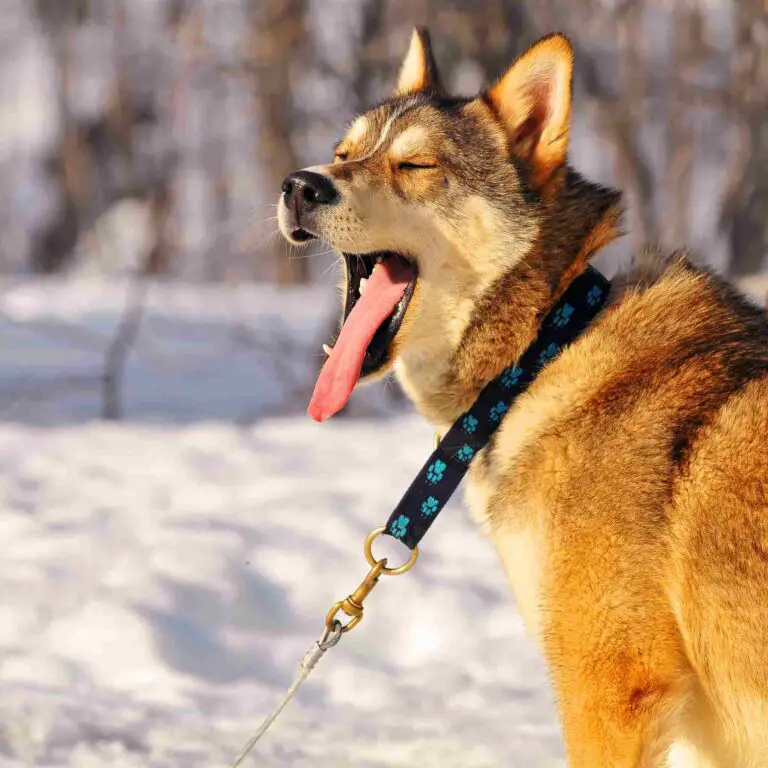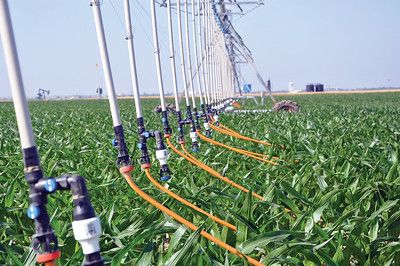Kodiak Bear Vs Gorilla: Size, Weight, Ecological Comparison
The Kodiak bear generally exceeds the gorilla in size and strength, as well as in predatory capability. In this article, we will explore the biological comparison between these two animals and delve into their size, weight, and physical attributes.
Key Outcomes
*Biological Comparison
The Kodiak bear and gorilla are not biologically related, but they can be compared in terms of their physical characteristics and behaviors. Both animals are large and powerful, but they have distinct differences in their appearance and habitat.
*Size and Weight Comparison
When it comes to total body length, the Kodiak bear also surpasses the gorilla. A male Kodiak bear can measure up to 10 feet in length, while a gorilla typically measures around 5 to 6 feet in length. This disparity in body length further emphasizes the Kodiak bear’s larger overall size.
Moving on to weight, the Kodiak bear once again takes the lead. A fully grown male Kodiak bear can weigh anywhere between 900 to 1,500 pounds, making it one of the largest bear species in the world. On the other hand, a male gorilla weighs significantly less, with an average weight ranging from 300 to 500 pounds.
*Physical Capability Comparison
The physical capabilities of the Kodiak bear and gorilla are vastly different. While both are strong animals, the Kodiak bear’s sheer size and strength give it the advantage. In a confrontation, the Kodiak bear’s power and aggression would likely overpower the gorilla, resulting in its defeat.
1). Taxonomy
The taxonomy of the Kodiak bear and gorilla reveals interesting similarities and differences between the two species. The Kodiak bear belongs to the genus Ursus and the species arctos middendorffi, while the gorilla belongs to the genus Gorilla and the species gorilla.
Both animals are classified under the order Primates, which includes humans, apes, and monkeys. However, the Kodiak bear is a member of the family Ursidae, which includes other bear species, while the gorilla is a member of the family Hominidae, which includes humans and other great apes.
In terms of comparison, the Kodiak bear and gorilla differ significantly in their physical characteristics and behavior. The Kodiak bear is a large, carnivorous mammal known for its massive size and strength, while the gorilla is a herbivorous primate known for its muscular build and intelligence.
While both animals share certain similarities in their genetic makeup and evolutionary history, their distinct adaptations and ecological roles set them apart.
2). Appearance
The appearance of the Kodiak bear and gorilla is distinct and adapted to their respective environments. Starting with their coats, the Kodiak bear has a thick fur that helps it withstand the cold temperatures of its habitat, while the gorilla has a shorter coat that provides protection in the tropical rainforests.
In terms of camouflage, both animals have evolved to blend in with their surroundings. The Kodiak bear’s fur can range in color from blonde to dark brown, allowing it to blend in with the rocky terrain and vegetation of its coastal habitat. On the other hand, the gorilla’s black fur helps it blend in with the shadows of the dense forest.
When it comes to stature and build, the Kodiak bear is known for its massive size and robust build. It can stand up to 10 feet tall when on its hind legs and can weigh over 1,500 pounds. In contrast, the gorilla is smaller in comparison, with males reaching heights of around 5.6 feet and weighing up to 400 pounds.
Overall, the appearance of the Kodiak bear and gorilla reflects their adaptations to their respective habitats. The Kodiak bear’s thick fur and large size make it well-suited for the cold and rugged environment, while the gorilla’s shorter coat and muscular build help it navigate the dense vegetation of the rainforest.
3). Size
When comparing the size of the Kodiak bear and gorilla, we need to consider their total body length and height at the shoulders. The Kodiak bear is known for its massive size, with adult males reaching lengths of up to 10 feet and standing at a height of around 5 feet at the shoulders. In contrast, the gorilla is smaller in size, with adult males measuring around 5.6 feet in height and having a total body length of approximately 6 feet.
The size difference between these two animals is significant, with the Kodiak bear being much larger and more imposing. This size advantage gives the bear an edge in terms of intimidation and dominance in its environment. The gorilla, although smaller, compensates for its size with its strength and agility.
It’s important to note that size plays a crucial role in the ecological dynamics of these animals. The Kodiak bear’s large size allows it to be a top predator in its habitat, while the gorilla’s smaller size enables it to navigate the dense vegetation of the rainforest more effectively.
4). Weight
When comparing the weight of the Kodiak bear and gorilla, it is evident that the Kodiak bear outweighs the gorilla significantly. Adult male Kodiak bears can weigh up to 1,500 pounds, making them one of the largest bear species in the world. In contrast, adult male gorillas typically weigh around 400 to 500 pounds.
The weight difference between these two animals is substantial and has a significant impact on their physical capabilities and ecological roles. The Kodiak bear’s larger size and weight give it a distinct advantage in terms of strength and dominance. With its massive weight, the bear can overpower prey and defend its territory effectively.
On the other hand, the gorilla’s relatively smaller weight allows it to be more agile and nimble in its rainforest habitat. Despite being smaller, gorillas possess incredible strength and can perform impressive displays of power. Their muscular build and ability to climb trees are adaptations that enable them to navigate their environment efficiently.
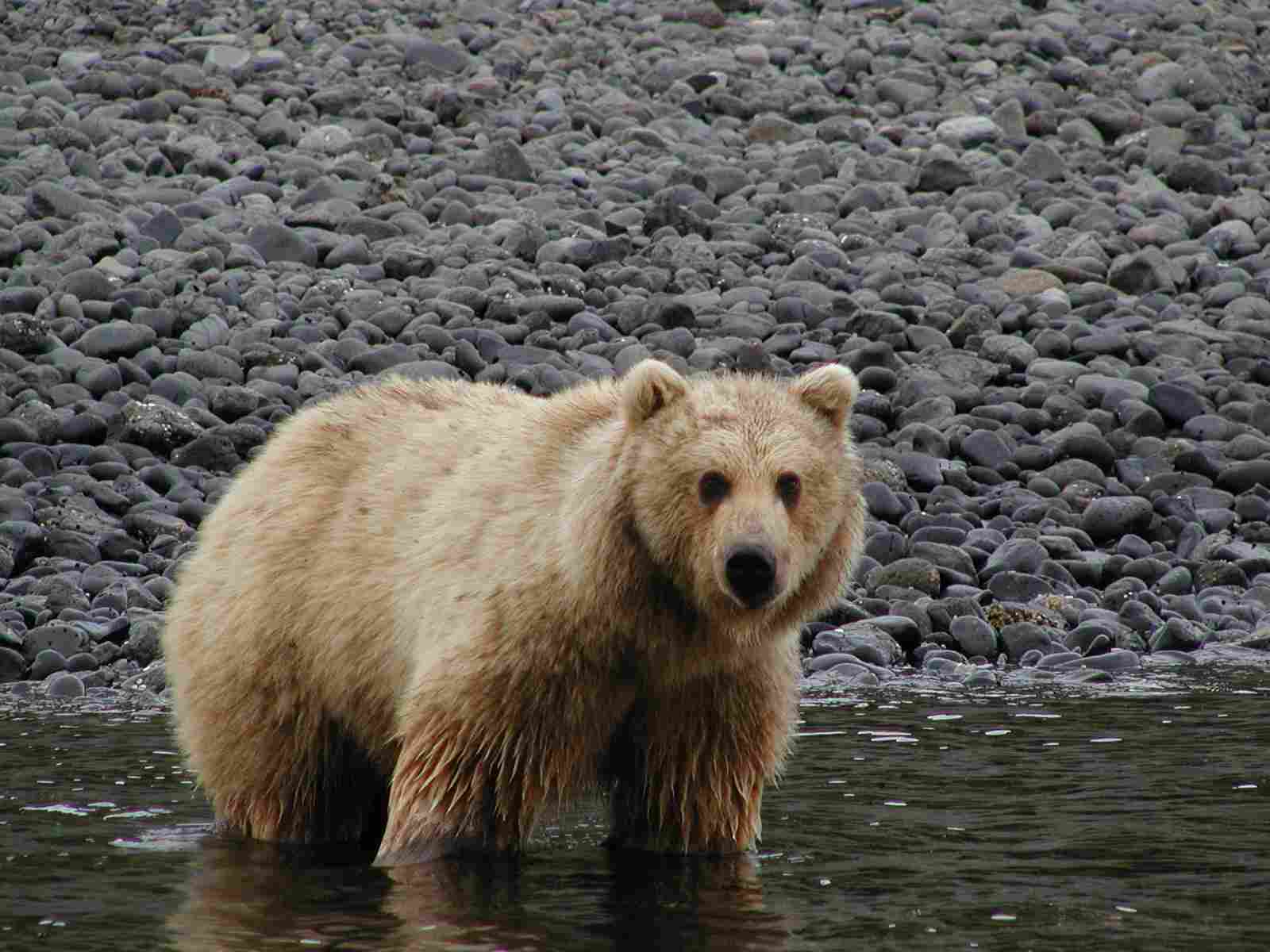
5). Bite Force
When comparing the bite force of the Kodiak bear and gorilla, it is clear that the Kodiak bear exceeds the gorilla in this aspect. The bite force of an animal is measured in pounds per square inch (psi), which indicates the pressure exerted by the animal’s jaws. While specific data on the bite force of these animals is limited, it is estimated that the Kodiak bear has a significantly stronger bite force than the gorilla.
The powerful jaws of the Kodiak bear allow it to exert immense pressure, enabling it to crush bones and tear through tough hides. This bite force is essential for hunting and consuming large prey, as well as defending itself against potential threats. On the other hand, the gorilla’s bite force, although impressive for its size, is not as strong as that of the Kodiak bear.
The difference in bite force between these two animals highlights their distinct ecological roles. The Kodiak bear’s powerful bite allows it to be a formidable predator, while the gorilla relies more on its physical strength and agility for survival.
6). Overall Physical Capacity
When comparing the overall physical capacity of the Kodiak bear and gorilla, it becomes evident that the Kodiak bear possesses superior strength and power. This is evident in the factors we have evaluated and compared between the two animals.
In terms of sheer size and weight, the Kodiak bear surpasses the gorilla, giving it a significant advantage in terms of physical strength. With its massive frame and muscular build, the Kodiak bear has the ability to overpower and dominate its opponents in a violent confrontation.
Additionally, the Kodiak bear’s powerful bite force, as discussed in the previous section, further contributes to its overall physical capacity. This immense bite force allows the bear to exert tremendous pressure, enabling it to crush bones and tear through tough hides. In contrast, while the gorilla possesses impressive physical strength, it does not possess the same level of bite force as the Kodiak bear.
Furthermore, the Kodiak bear’s habitat and lifestyle contribute to its overall physical capacity. Living in the rugged and challenging environments of Alaska, the bear has developed adaptations that enhance its strength and endurance. It is capable of swimming long distances, climbing trees, and running at impressive speeds, making it a formidable force in its ecosystem.
7). Habitat
The habitat of the Kodiak bear and gorilla plays a crucial role in shaping their physical characteristics and behavior.
The Kodiak bear is primarily found in the Kodiak Archipelago in Alaska, which provides a diverse range of ecosystems for the bear to inhabit. From dense forests to open meadows, the Kodiak bear has adapted to thrive in various environments. This adaptability allows the bear to access different food sources and adapt its hunting strategies accordingly.
On the other hand, gorillas are native to the forests of Central Africa, specifically in countries such as Uganda, Rwanda, and the Democratic Republic of Congo. These dense rainforests provide the gorillas with ample vegetation for their herbivorous diet. The gorillas have developed strong arms and shoulders to navigate through the dense vegetation and climb trees when necessary.
While both animals have adapted to their respective habitats, the Kodiak bear’s habitat poses more challenges due to the harsh Alaskan climate. The bear has to endure long, cold winters and limited food availability during this time. In contrast, gorillas benefit from the consistent climate and year-round availability of vegetation in their forest habitat.
8). Lifespan
The lifespan of the Kodiak bear and gorilla is an important factor to consider when comparing these two animals.
The Kodiak bear has an average lifespan of around 20 to 25 years in the wild. However, some individuals have been known to live up to 30 years. Factors such as food availability, habitat quality, and competition for resources can influence the lifespan of Kodiak bears.
On the other hand, gorillas have a longer lifespan compared to Kodiak bears. In the wild, gorillas can live up to 35 to 40 years. In captivity, where they are protected from predators and have access to a consistent food supply, gorillas can live even longer, with some individuals reaching their 50s or 60s.
The difference in lifespan can be attributed to various factors. Gorillas have a more herbivorous diet, which may contribute to their longer lifespan. Additionally, gorillas live in stable social groups and have a lower risk of predation compared to Kodiak bears.
9). Behavior
The behavior of Kodiak bears and gorillas differs significantly due to their distinct ecological niches and social structures.
In terms of feeding behavior, Kodiak bears are omnivorous, consuming a wide range of plant material, fish, and small mammals. They are opportunistic feeders, adapting their diet based on seasonal availability. Gorillas, on the other hand, are herbivores, primarily feeding on leaves, stems, and fruits. Their diet consists mainly of vegetation, with a preference for certain plant species.
Aggression is another aspect of behavior that sets these animals apart. Kodiak bears are known for their territorial nature and can display aggressive behavior when their space is threatened. Gorillas, on the other hand, are generally peaceful animals, but males can exhibit aggression during territorial disputes or when protecting their group.
Social behavior also differs between the two species. Kodiak bears are solitary animals, except during the mating season or when a female is raising her cubs. Gorillas, on the other hand, live in cohesive social groups called troops, led by a dominant silverback male. These troops provide protection and support for each other.
Parenting behavior is another notable difference. Kodiak bear cubs are raised solely by their mothers, who provide them with protection and teach them essential survival skills. Gorilla infants, on the other hand, receive care and protection not only from their mothers but also from other members of the troop, creating a strong bond within the group.
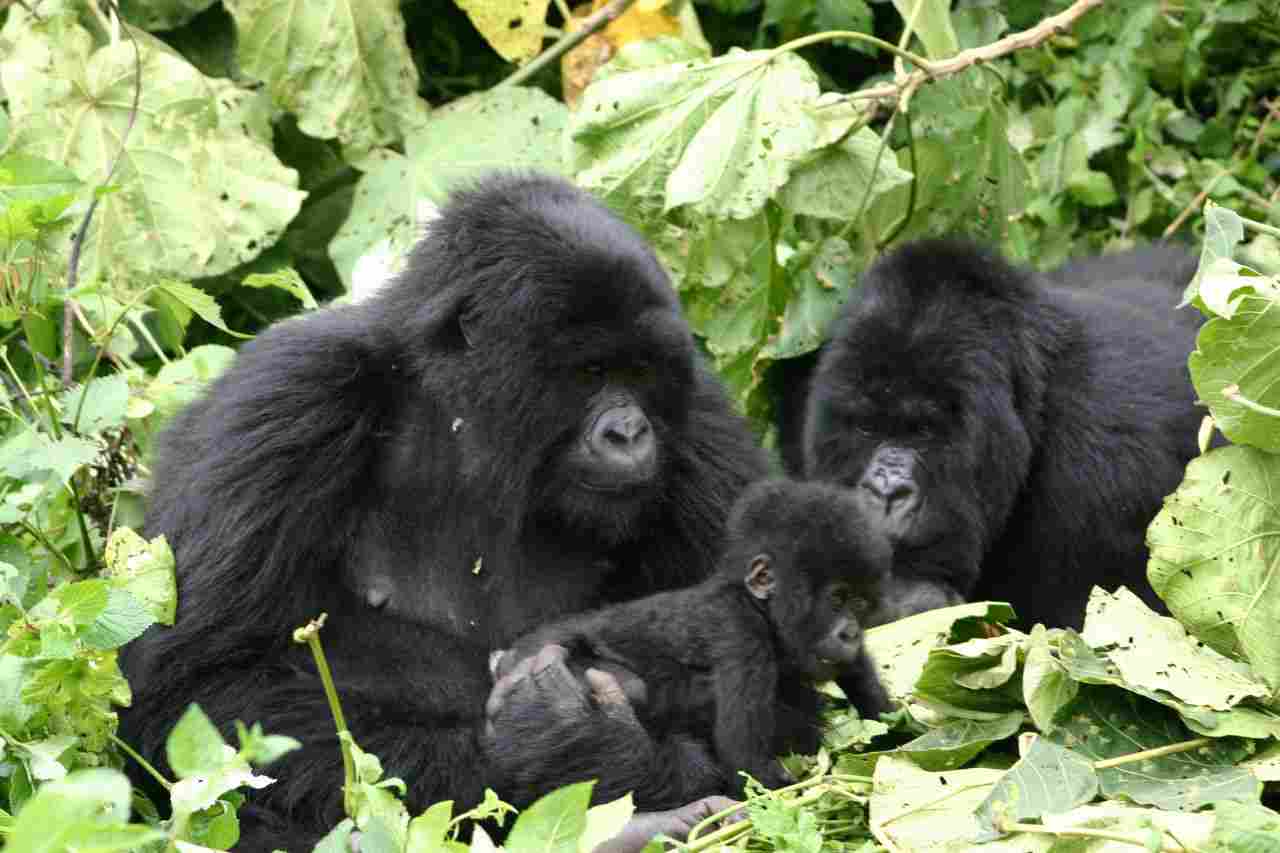
10). Reproduction
When it comes to reproduction, Kodiak bears and gorillas have distinct strategies. Kodiak bears are viviparous, meaning they give birth to live young. The female bear undergoes a gestation period of approximately 220 days before giving birth to one to four cubs. The cubs are born blind and helpless, relying on their mother for nourishment and protection. This reproductive strategy allows Kodiak bears to ensure the survival of their offspring in the harsh Alaskan wilderness.
On the other hand, gorillas are also viviparous, giving birth to live young. The gestation period for gorillas is around 8.5 months, similar to that of humans. Female gorillas typically give birth to a single infant, which is born relatively developed and capable of clinging to its mother’s fur. This adaptation allows the mother to move freely while carrying her offspring, ensuring their safety and allowing her to continue foraging for food.
In terms of reproductive success, both species have evolved strategies that maximize the chances of survival for their young. However, the differences in their reproductive strategies reflect their distinct ecological niches and social structures.
While Kodiak bears prioritize individual survival and invest heavily in raising their cubs, gorillas rely on the support of their social group to ensure the well-being of their offspring.
11). Danger Posed to Humans
Kodiak bears are generally more dangerous than gorillas owing to their larger size, weight, and predatory nature.
When it comes to the danger posed to humans, both Kodiak bears and gorillas have different behaviors and interactions with human settlements. Kodiak bears are known to inhabit remote areas, primarily in Alaska, and their encounters with humans are relatively rare.
However, when they do come close to human settlements, they can be potentially dangerous. It is important for humans to exercise caution and take necessary precautions if they encounter a Kodiak bear in the wild.
On the other hand, gorillas are primarily found in the dense forests of Africa. While they generally avoid human settlements, there have been instances where gorillas have come into contact with humans. However, gorillas are not inherently aggressive towards humans and tend to exhibit a more peaceful nature. In fact, they are known to be shy and will usually retreat if they feel threatened.
In terms of the rate of human deaths caused, Kodiak bears have been involved in a few fatal incidents, although these are relatively rare. Gorillas, on the other hand, have not been known to cause any human deaths in the wild. It is important to note that both species should be treated with respect and caution, as they are powerful animals capable of causing harm if provoked.
If you happen to encounter either a Kodiak bear or a gorilla in the wild, it is crucial to remain calm and avoid any sudden movements. Backing away slowly and giving the animal space is the best course of action. It is also advisable to carry bear spray or other deterrents when venturing into bear or gorilla habitats.
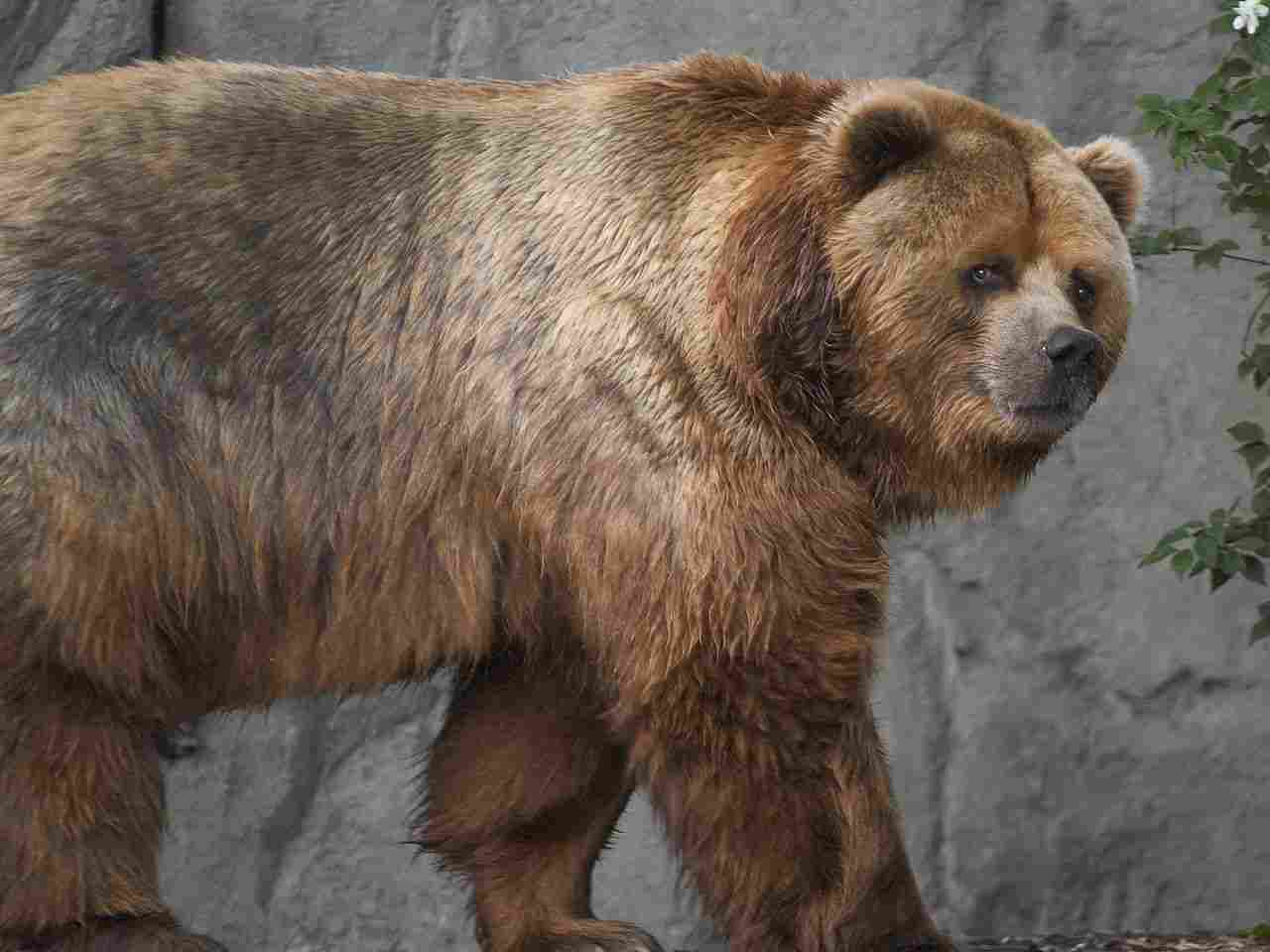
12). Conservation Status
The conservation status of both Kodiak bears and gorillas is a matter of concern due to the main threats to their survival in the wild.
Kodiak bears are currently classified as a species of “least concern” by the International Union for Conservation of Nature (IUCN). However, their population is still vulnerable to various factors such as habitat loss, climate change, and hunting. The expansion of human activities, including logging and development, has resulted in the destruction of their natural habitats.
Additionally, climate change has led to the reduction of food sources, impacting their overall population. While hunting is strictly regulated, illegal poaching remains a threat to Kodiak bears.
Gorillas, on the other hand, face a more critical conservation status. They are classified as either “endangered” or “critically endangered” depending on the species. The main threats to gorilla populations include habitat destruction (by deforestation, pollution), poaching, and disease.
Deforestation, primarily driven by logging and agriculture, has significantly reduced their natural habitats. Poaching for bushmeat and the illegal wildlife trade also pose a severe threat to gorillas. Furthermore, diseases such as Ebola have had devastating impacts on gorilla populations.
Efforts are being made to protect and conserve both Kodiak bears and gorillas. Conservation organizations and governments are implementing measures to preserve their habitats, enforce anti-poaching laws, and raise awareness about the importance of these species.
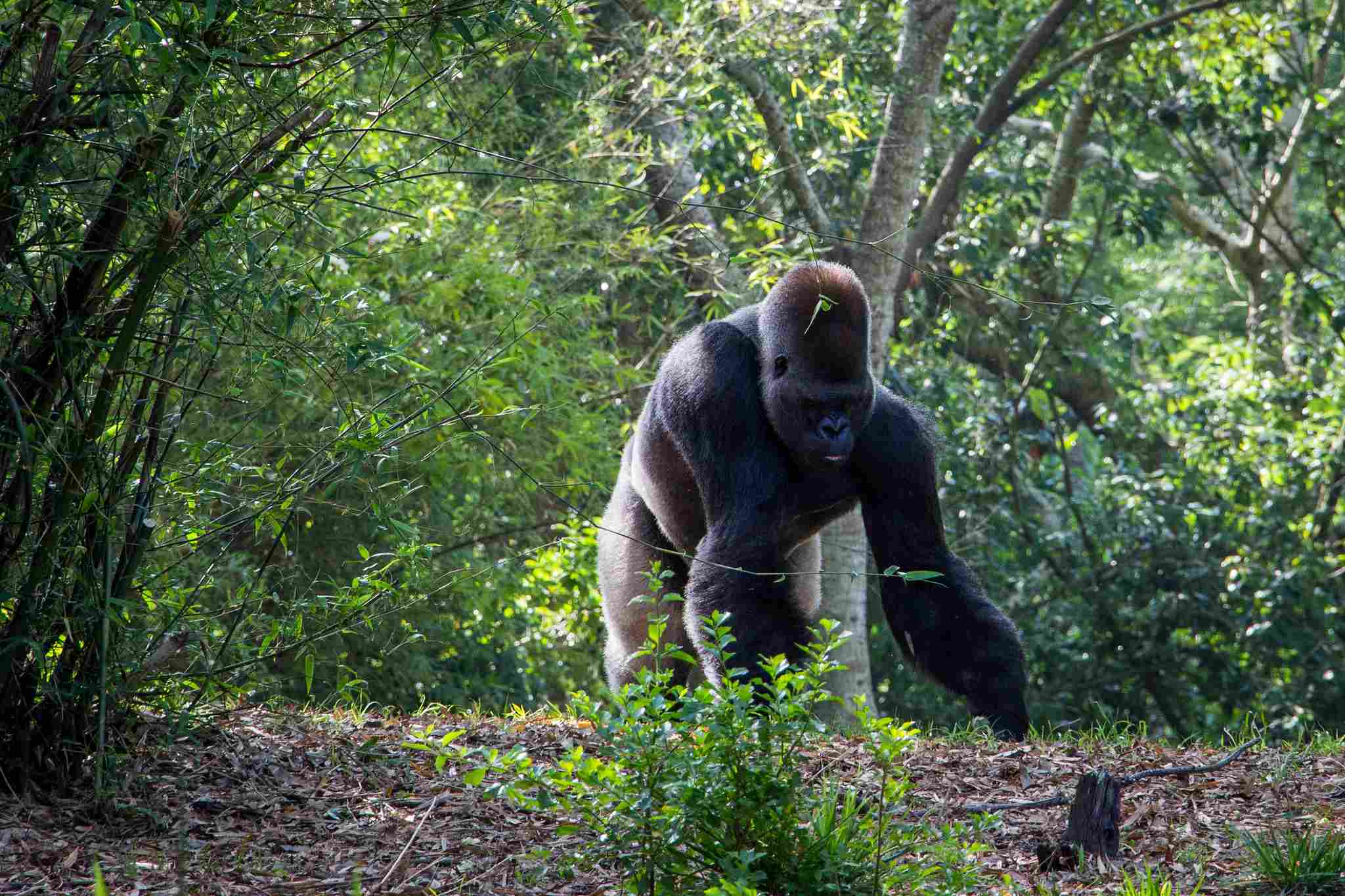
Conclusion
I). SIMILARITIES
In comparing Kodiak bears and gorillas, several similarities can be observed. Both animals are large and powerful, with impressive physical capabilities. They are also both at risk due to habitat loss and human activities. Kodiak bears and gorillas are both important species in their respective ecosystems, playing crucial roles in maintaining biodiversity.
II). DIFFERENCES
Despite their similarities, there are notable differences between Kodiak bears and gorillas. One key difference lies in their taxonomy, with Kodiak bears belonging to the Ursidae family and gorillas belonging to the Hominidae family. Additionally, Kodiak bears are primarily solitary animals, while gorillas live in social groups.
In terms of size and weight, Kodiak bears are larger and heavier than gorillas. Kodiak bears can reach heights of up to 10 feet and weigh over 1,500 pounds, while gorillas typically stand around 5 to 6 feet tall and weigh between 300 to 500 pounds.
Another significant difference is their overall physical capacity. Kodiak bears are known for their powerful bite force and exceptional swimming abilities, while gorillas are renowned for their incredible strength and agility.
